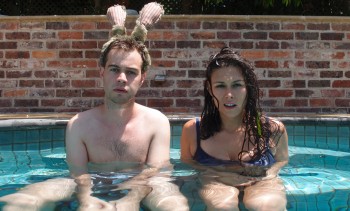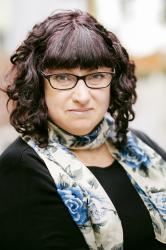Winterfall’s Midsummer Night’s Dream
Winterfall theatre enthusiastically tackle Midsummer Night’s Dream in The Husk Theatre, a converted warehouse. The irregularly elevated seating gives the venue a fringey, art-on-the-edge type of feel, and the proximity of seats to the stage promises an intimate theatrical experience.
If the mission of Winterfall theatre is to keep plays with their stories, struggles and ideas alive for new audiences, or to illuminate a period of history, then they have succeeded, but director and company co-artistic director Trent Baker is such a self-confessed devotee of Shakespeare that I wonder if he is afraid of being an iconoclast. The company needed to find a new angle on this piece to make it memorable.

Shakespeare’s enduring comedy (believed to be written in the mid-1590s) is about the trials of Athenian lovers when fairies try their hand at matchmaking. The delivery of dialogue is crisp, the competition between male suitors for the ladies and the escalating jealously between these ladies is believable, and the lovers throw themselves into the physical interactions with conviction. An entanglement between costume and scenery and a handful of missteps with the dialogue, whilst unfortunate, did not injure the performance, and should be eliminated later in the season.
As there are many worthy stories to tell, it would be interesting to know why the company decided to tell this one. As Dream is frequently performed, audiences familiar with it may expect to be surprised by a new production, such as in the production by Korean company Yohangza I saw at the Oz Asia festival where characters swapped genders and mischievous fairy Puck was split into twins. Winterfall’s production promises a novel slant from the image on their website and the opening where actors seemed to scrabble to secure particular roles for themselves, but this thrust was quickly abandoned, leading to a fairly conventional telling of the tale. The program notes refer to “Peter Brook’s seminal 1970 production”, a radical reimagining by the Royal Shakespeare Company featuring masculine fairies and circus tricks. It seems the main inspiration drawn from that performance is a much tamer one, to “double” some roles, as one actor plays both Theseus, Duke of Athens and Oberon, King of the Fairies, and another plays both Queen of the Amazons, Hippolyta, and Queen of the Fairies, Titania.
Apart from the tale of love pursued and spurned, there is also a subplot of trades people who fancy themselves as actors, practicing a play intending to it present for Theseus and Hippolyta. As presented, it is quite hard to justify the inclusion of the performance, as by this stage the drama of the play is largely resolved. The scene gives an opportunity for slapstick humour (and was enjoyed by some in the audience) and while the limited skills of the unsophisticated performers were played appropriately, the central couples of the play were reduced to spectators.
This was a pleasant evening of theatre, which I think I would have appreciated more if it had been bolder in nurturing the shoots of their new ideas. I look forward to the next production of this company, as Hermia put it, “To seek new friends and stranger companies”, and hope in that in their next outing Winterfall will have more confidence in their own innovations.

